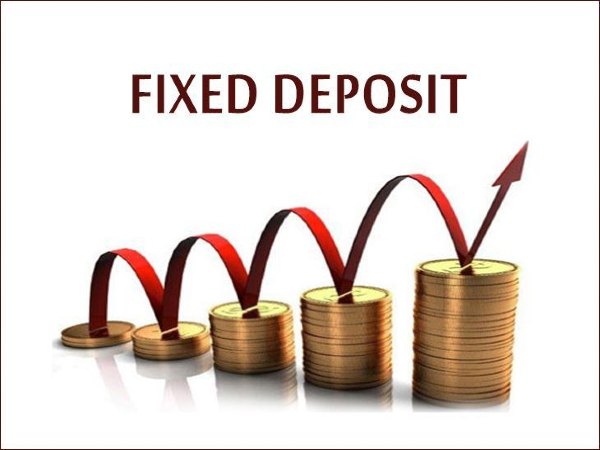Importance of PE And EPS Fundamentals in Stocks
Even if you do not adopt the key valuation ratios, it is typically advisable to have a solid knowledge of them in order to follow and better understand stock prices. The price-to-earnings ratio (P/E) and earnings per share (EPS) are two important terms.
Earnings per share: The net income received by the corporation is divided by the number of outstanding shares issued to arrive at this figure.
The Earnings per Share is calculated by dividing a company’s profits or earnings by the total number of outstanding shares of stock (ttm). The abbreviation EPS refers for Earnings per Share, and the “ttm” refers for Trailing Twelve Months. This means that EPS (ttm) represents the company’s overall earnings or profits for the previous 12 months.
P/E ratio: The P/E ratio is calculated by dividing the stock price by the earnings per share.
For example, if a stock’s current price is Rs. 100 and it has earned Rs. 5 per share (EPS) for its shareholders in the last 12 months, the stock’s current price is Rs. 100. The P/E ratio is calculated as 100/5=20.
It is not suggested to purchase stocks with high PE ratios, which indicate that the company is overvalued, because the stock could ruin your wealth to the point of no recovery if and when the stock falls.
Cement Sector Outlook
Cement businesses in India reported a strong increase in profitability in the second quarter of FY21, as demand for the industry grew due to rural revival. The demand outlook remained solid as the rural markets normalized. CLSA anticipates a 14% YoY increase in EBITDA in the cement sector for its coverage stocks in FY21. Due to increased demand in various areas like as housing, commercial development, and industrial expansion, the cement industry is expected to reach 550-600 million tonnes per annum (MTPA) by 2025..
Cement Growth Stocks: Shree Cement
Shree Cement was established in 1979, and company headquarters are in Kolkata. Shree Cement is regarded as India’s third-largest cement company. Bangur Cement and Rokcstrong Cement are two brands owned by Shree Cement. Up until 2014, the company’s capacity was concentrated in northern India, but it has since expanded to include Rajasthan, Uttarakhand, Bihar, Chhattisgarh, Haryana, Uttar Pradesh, and Karnataka. Stock gained 74.76 percent over three years, compared to 44.34 percent for the Nifty 100 index. It is a Large Cap firm in the Cement sector with a market cap of Rs 102,779.26 Crore. The company is one of the most prolific in the cement sector. Despite the entrance of new cement players through recent inorganic techniques, Shree Cements maintains its dominant position in northern regions.
HIL
HIL Ltd., founded in 1955, is a Small Cap business in the Building Materials industry with a market cap of Rs 3,487.63 crore. The company reported a Consolidated Total Income of Rs 846.98 Crore for the quarter ended 31-03-2021, up 4.72 percent from the previous quarter’s Total Income of Rs 808.82 Crore and up 30.14 percent from the same period last year’s Total Income of Rs 650.84 Crore. In the most recent quarter, the company generated a net profit after tax of Rs 62.73 crore. Stock returned 131.7 percent over three years, compared to 26.45 percent for the Nifty Smallcap 100.
Ultratech Cement
The company Ultratech Cement was founded in 1983 and is headquartered in Mumbai, India. Ultratech Cement is the country’s largest grey cement producer. It is widely regarded as the best cement producer in the country. This company is a subsidiary of the Aditya Birla Group and is one of the top companies in the cement industry. On a quarterly and annual basis, the company recorded an increase in total income. The total income for the March 31, 2021 quarter was Rs 14465.94 crore, up 15.52 percent quarter on quarter and 32.19 percent year on year.
The company operates in nations such as the United Arab Emirates, Bahrain, Sri Lanka, and Bangladesh. The firm is also a major producer of RMC and white cement.
Cement Growth Stocks: ACC
With a pan-India operating and marketing presence, ACC Limited is a significant participant in the Indian building materials business. The company was formerly known as Gujarat Ambuja Cements Ltd, but was later renamed Ambuja Cements Ltd. Holcim, a worldwide cement company, took over management control of the company in 2006. Holcim currently owns a bit more than half of ACL. The company ACC Cement was formed in 1936 and is headquartered in Mumbai, India. The Associate Cement Company was once known as ACC cement. It is one of the leading cement manufacturing companies in the country.
Cement Growth Stocks With Highest EPS Fundamentals
| Company |
Stock Price |
Market Cap |
EPS (TTM) in Rs |
| Shree Cement |
28,165.90 |
1.02LCr |
633.54 |
| HIL |
4,572.05 |
3,425.63 |
346.68 |
| Ultratech Cement |
6,587.40 |
1,90,148 |
186.78 |
| ACC |
2,020 |
37,942.42 |
88.92 |
Cement Growth Stocks With Highest EPS Fundamentals
Cement Value Stocks: NCL Industries
The top Cement stocks with the best accessible price-earnings ratio are listed below (trailing).
NCL Industries Ltd., founded in 1979, is a Small Cap business in the Cement sector with a market capitalization of Rs 978.61 crore. The company reported a Consolidated Total Income of Rs 370.92 Crore for the quarter ended December 31, 2020, up 6.10 percent from the previous quarter’s Total Income of Rs 349.59 Crore and up 77.30 percent from the same quarter last year’s Total Income of Rs 209.21 Crore. In the most recent quarter, the company generated a net profit after tax of Rs 41.59 crore. Stock returned 20.35 percent over three years, compared to 26.45 percent for the Nifty Smallcap 100. The company has give Rs 4 as dividend per share.
JK Cements
JK Cement is a high-end firm that specialises in high-quality cement. This cement company has a large client base all over the country and is rapidly increasing its commercial boundaries. The JK cement PE ratio stands at 30.61.
Deccan Cement
In India, Deccan Cements Limited produces and sells cement. Ordinary Portland, Portland pozzolana, and Portland slag cement are available, as well as specialty cement such as rapid hardening, sulfate resistance, high alumina, and oil well cement, as well as 53-S grade ordinary Portland cement, which is used in railway applications. The Deccan cement PE ratio stands at 6.78.
10 Best Cement Stocks By Market Capitalizaton
| Company |
Last Price |
Market Cap(Rs. cr) |
| UltraTech Cement |
6,585.70 |
190,098.47 |
| Shree Cements |
28,233.10 |
101,867.14 |
| Ambuja Cements |
338.85 |
67,283.59 |
| ACC |
2,020.70 |
37,946.17 |
| Dalmia Bharat |
1,835.70 |
34,349.16 |
| Ramco Cements |
1,015.40 |
23,952.27 |
| J. K. Cement |
2,774.95 |
21,441.55 |
| JK Lakshmi Cem |
560.00 |
6,589.52 |
| India Cements |
191.45 |
5,932.98 |
| Heidelberg Cem |
248.65 |
5,634.74 |
Disclaimer
Market performance is subject to risk, and past performance is not a guarantee of future success. Trading and investing in securities markets, such as equities, derivatives, commodities, and currencies, have a significant risk of loss. GoodReturns is not a broker/dealer, we are not an investment advisor.

















